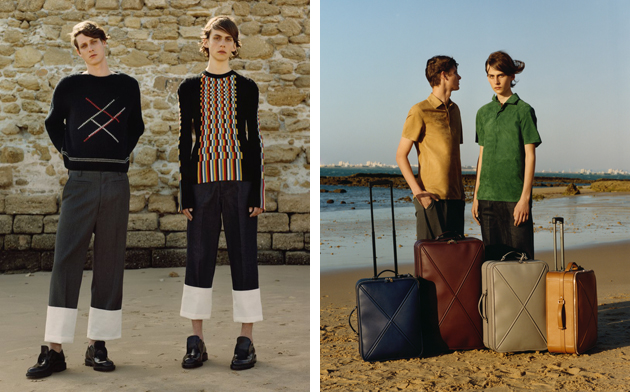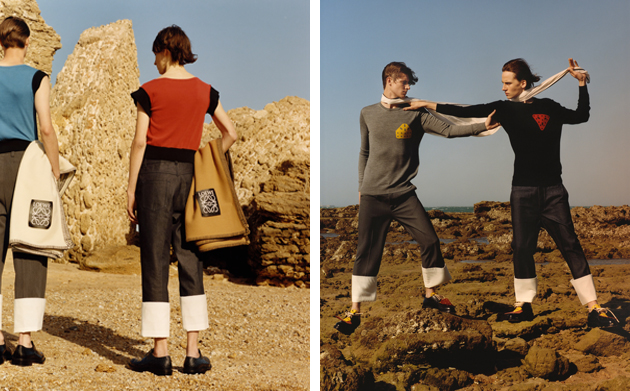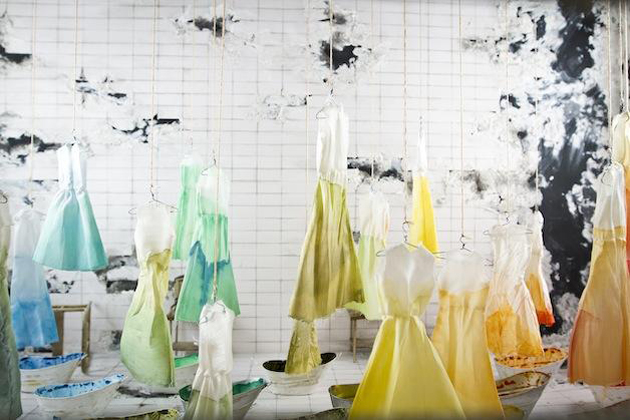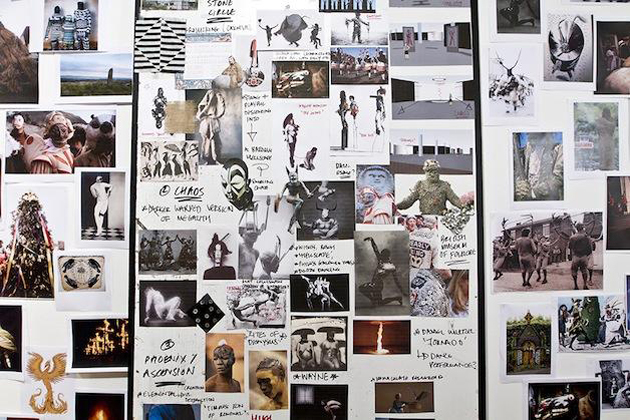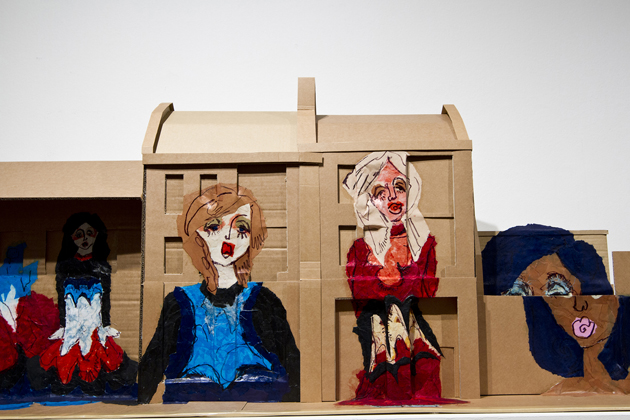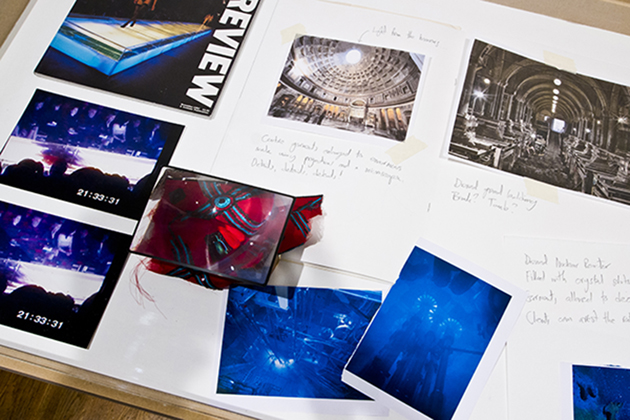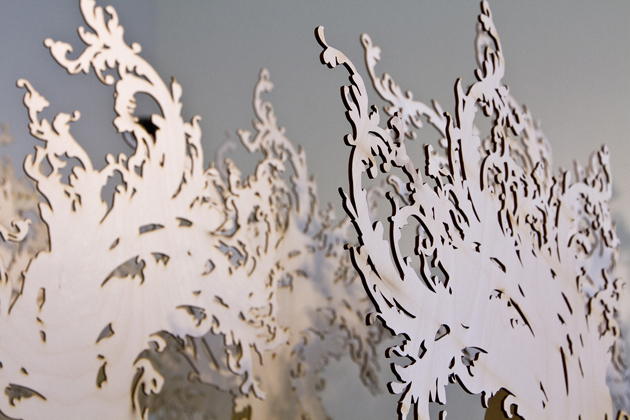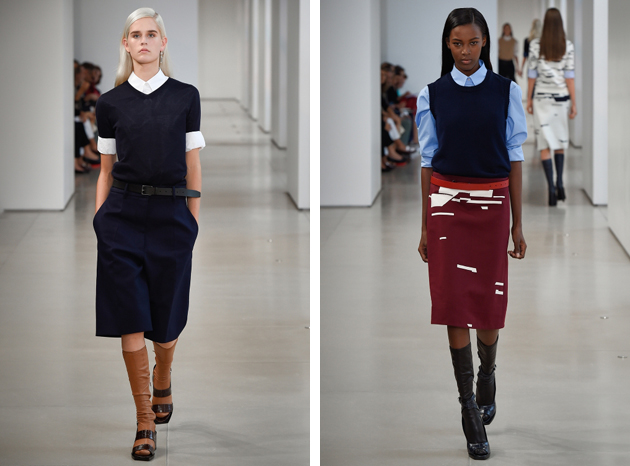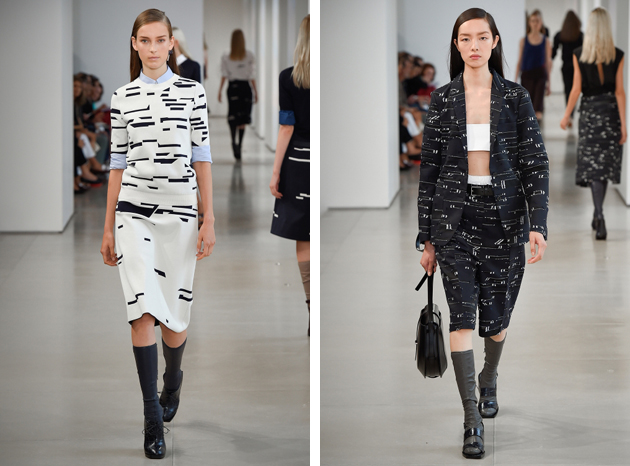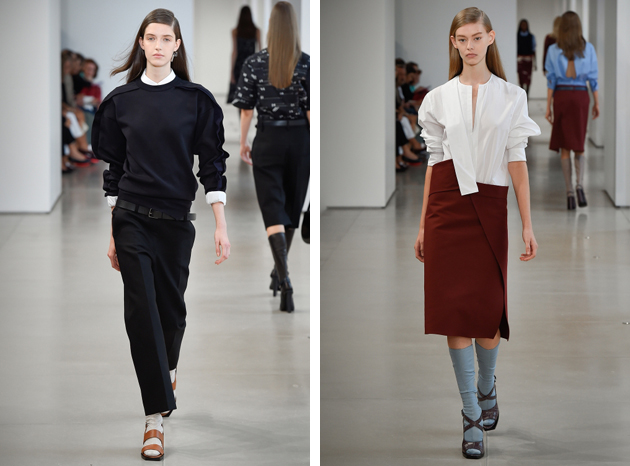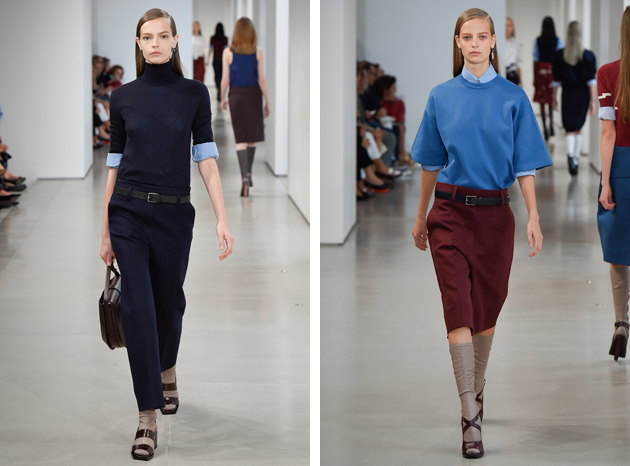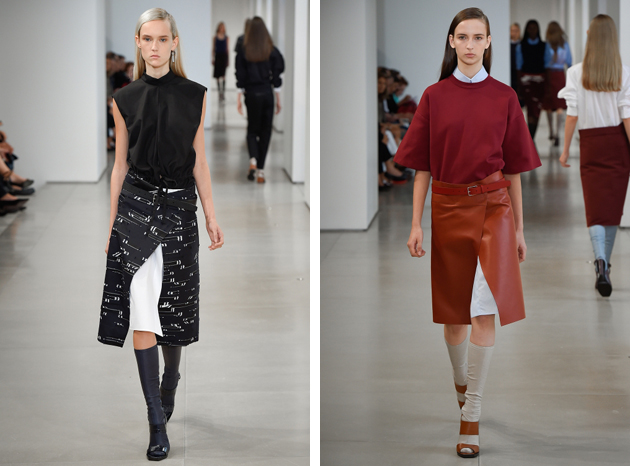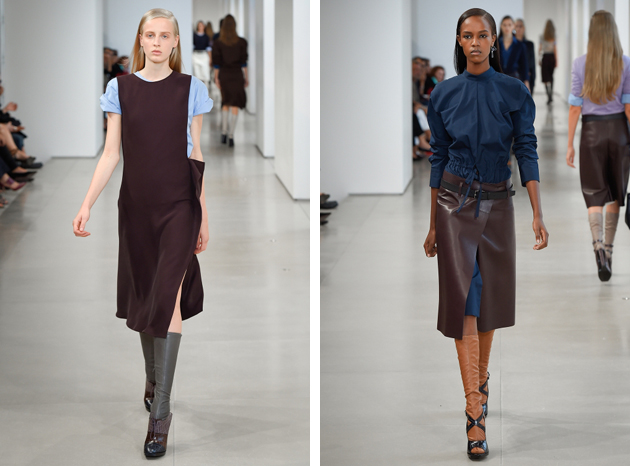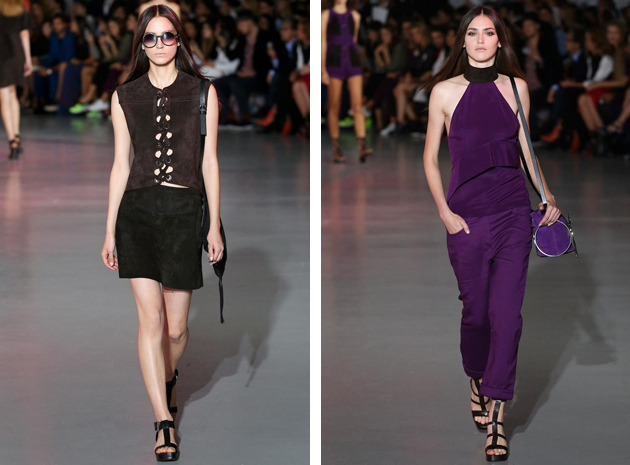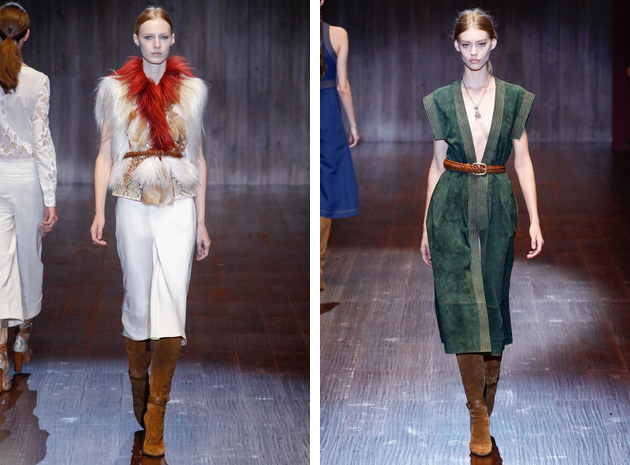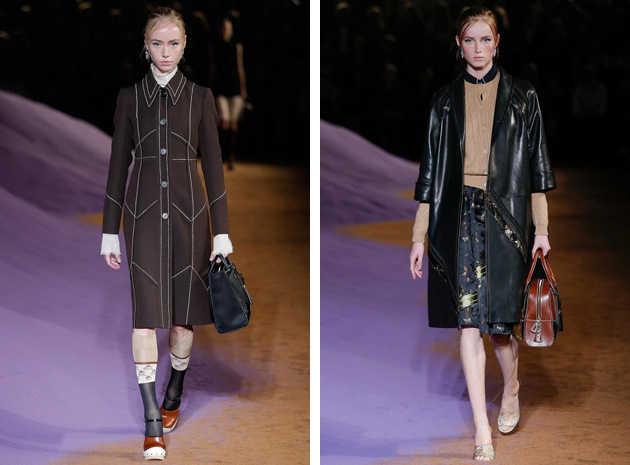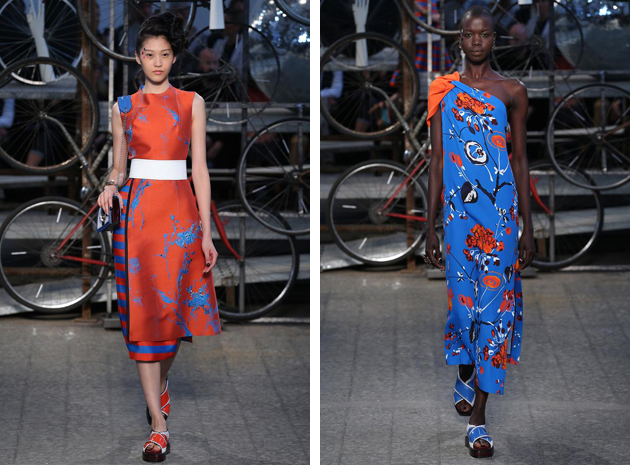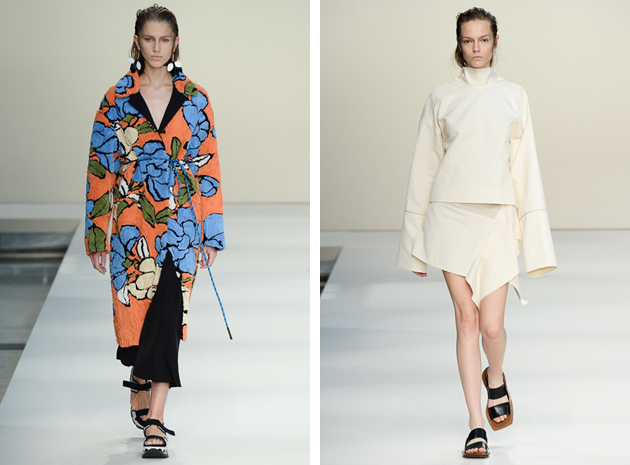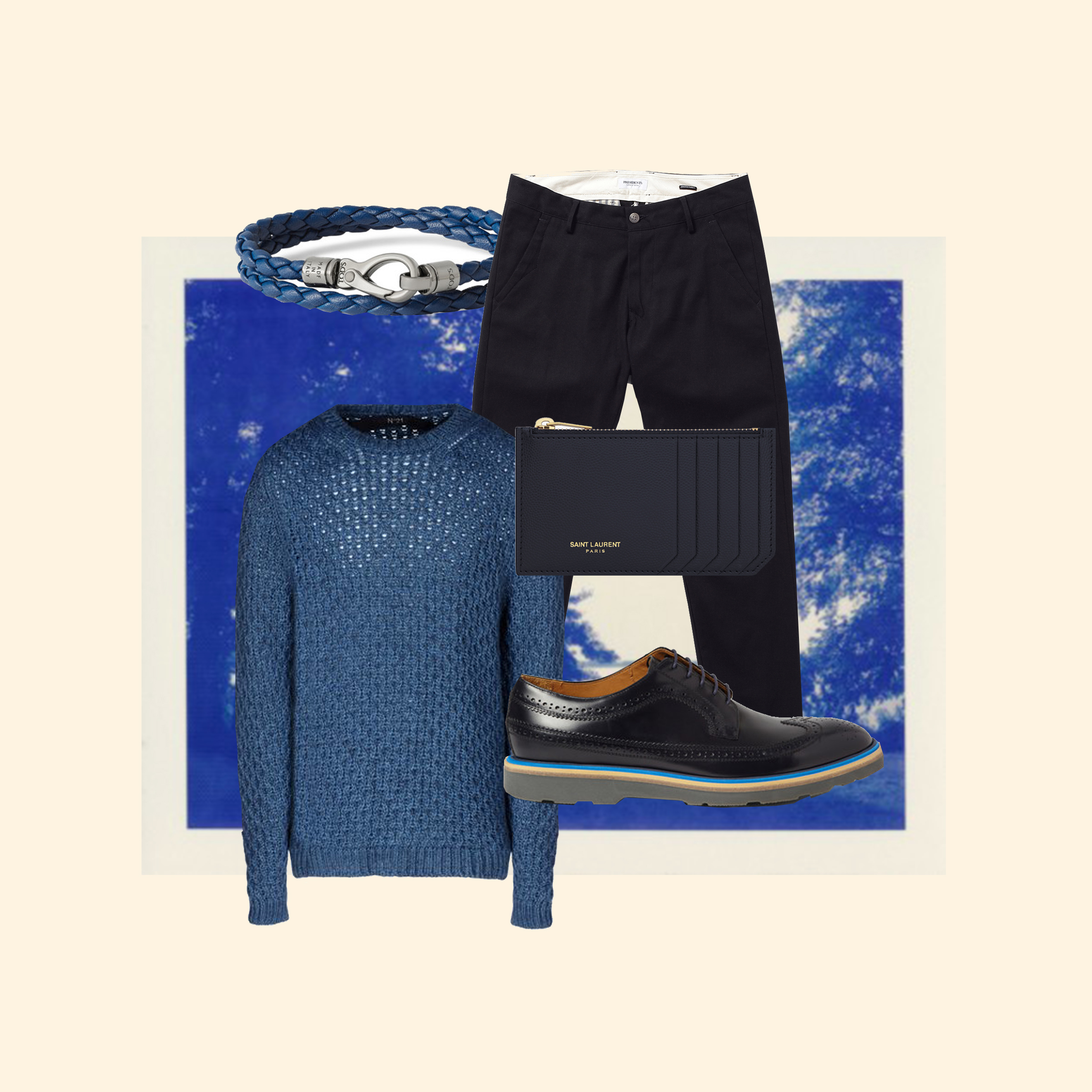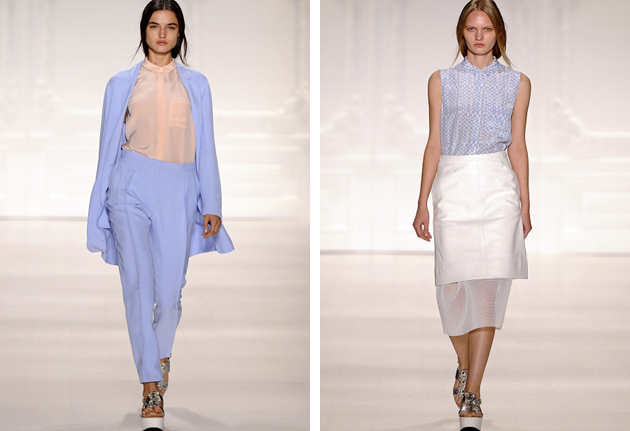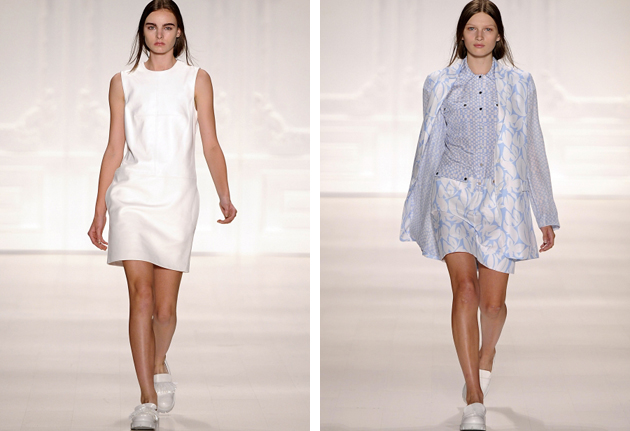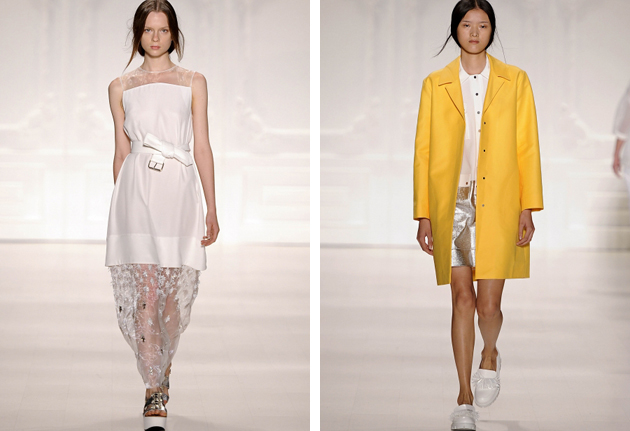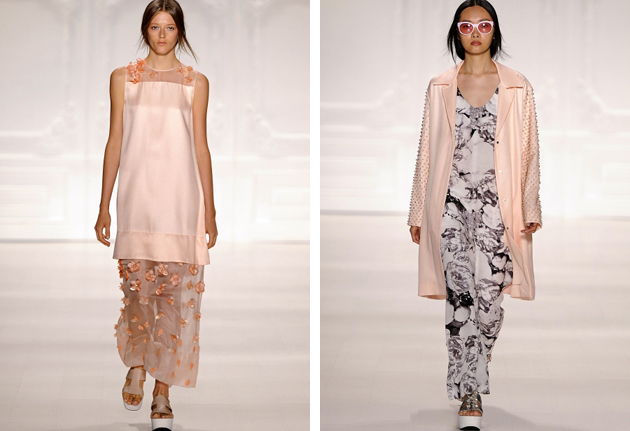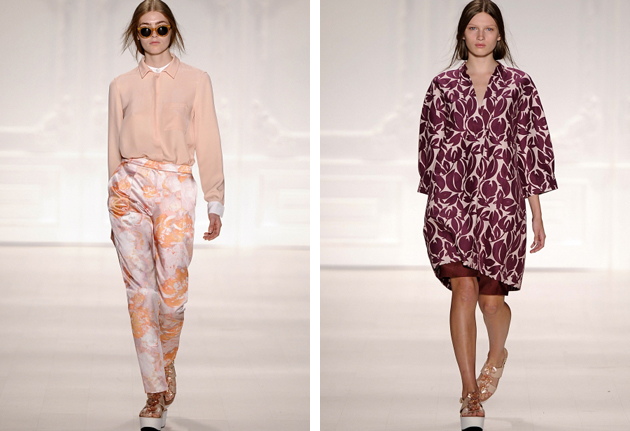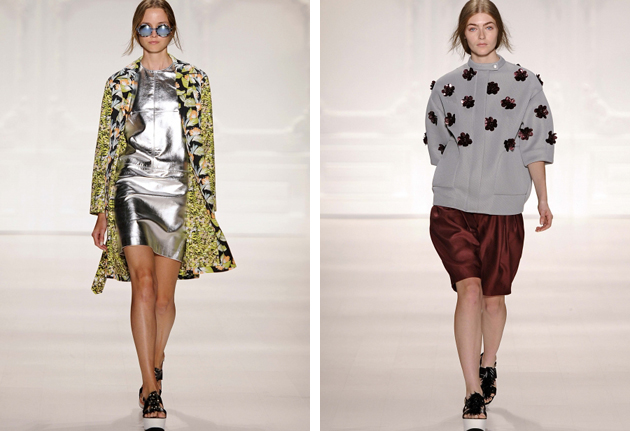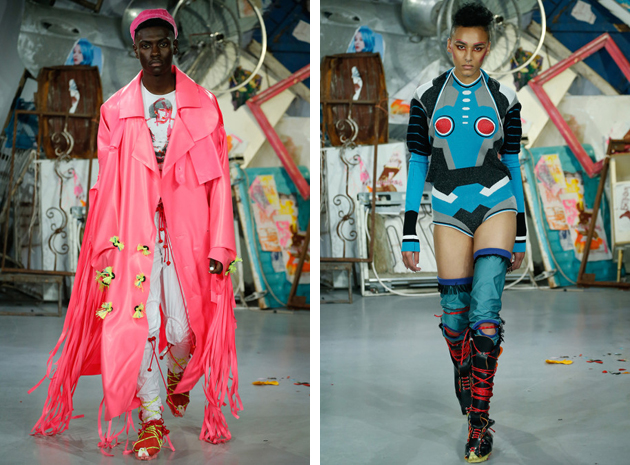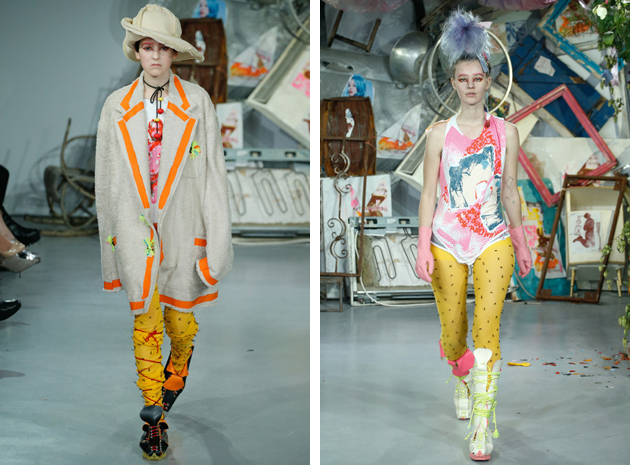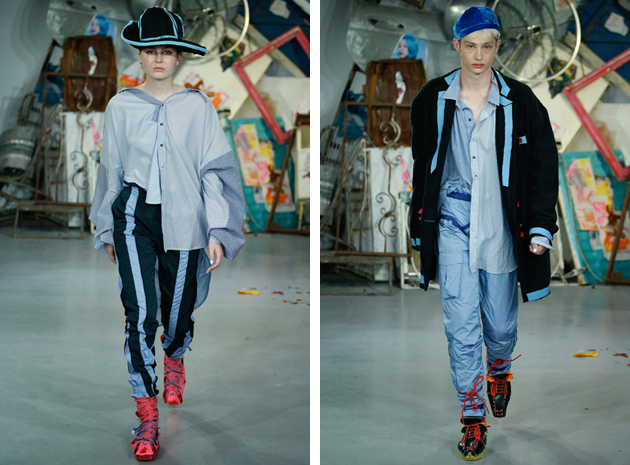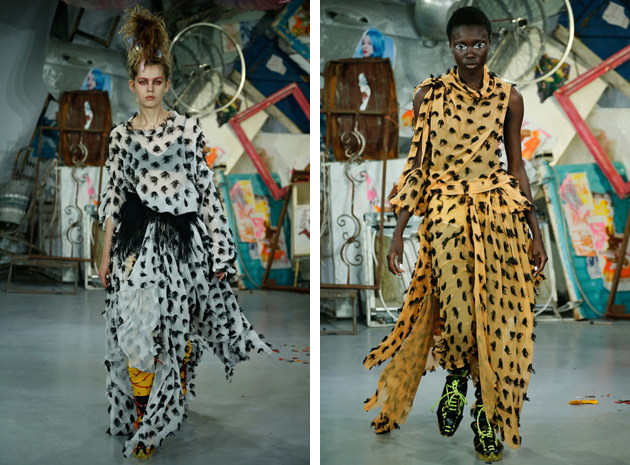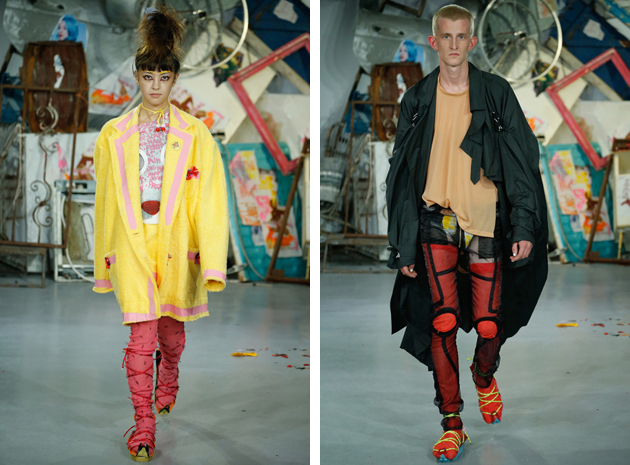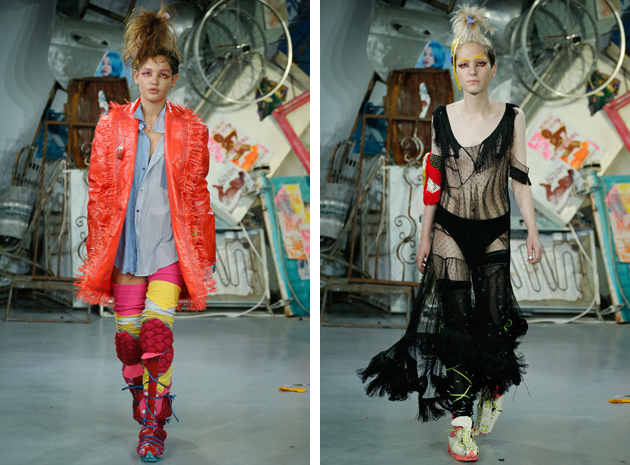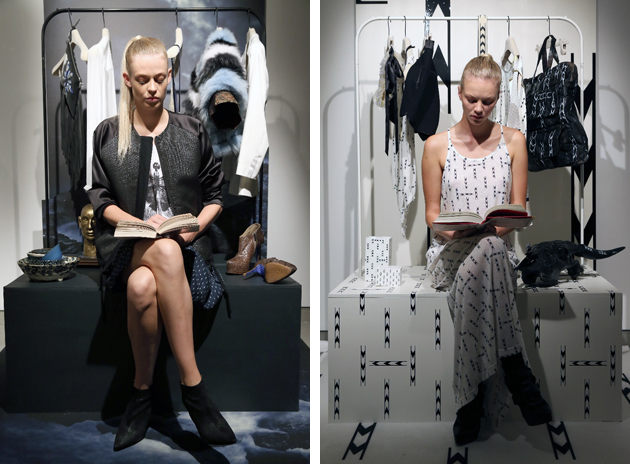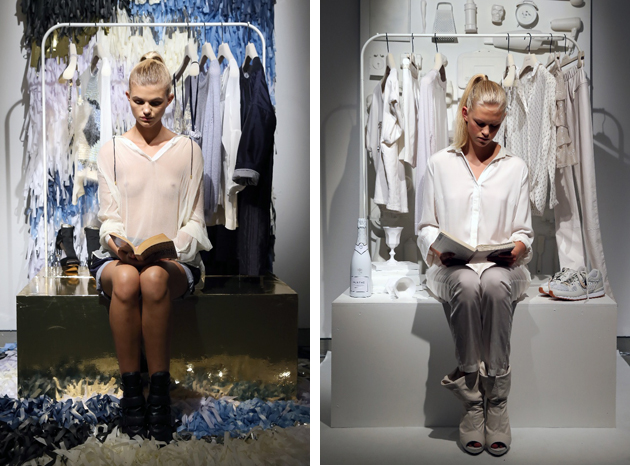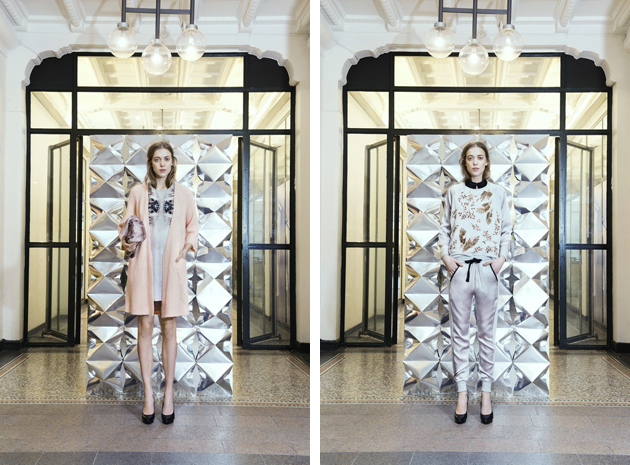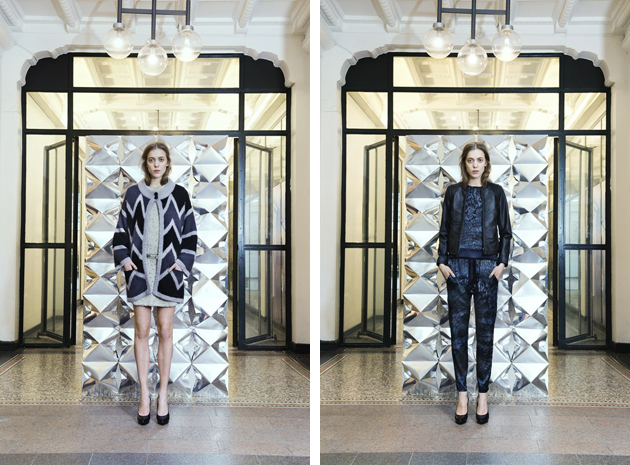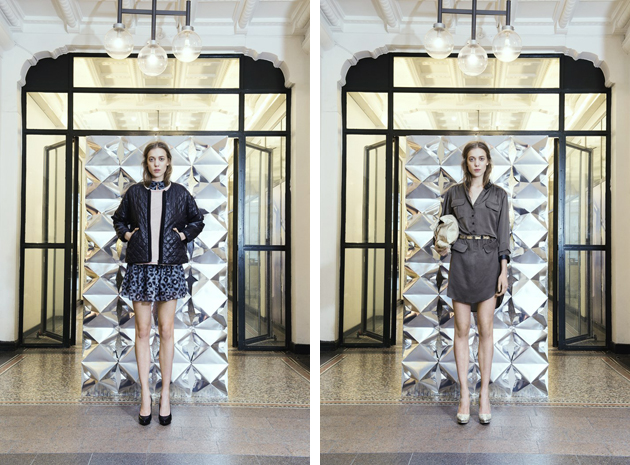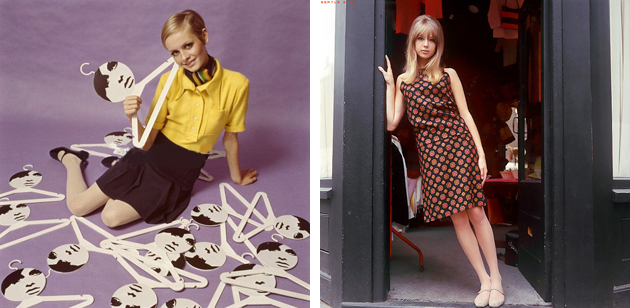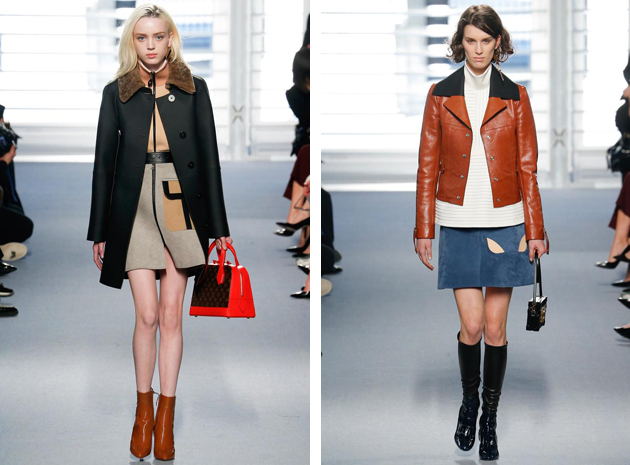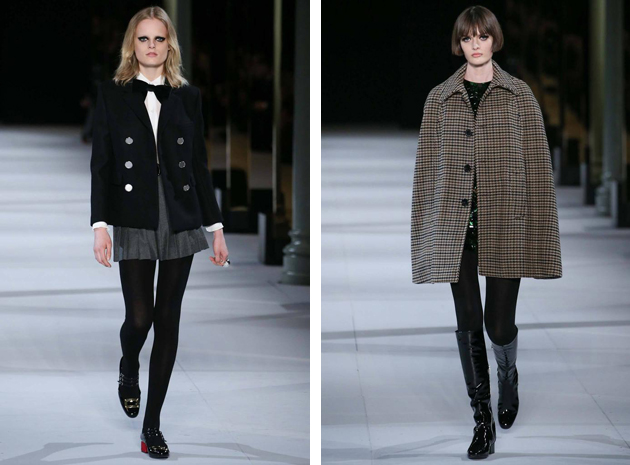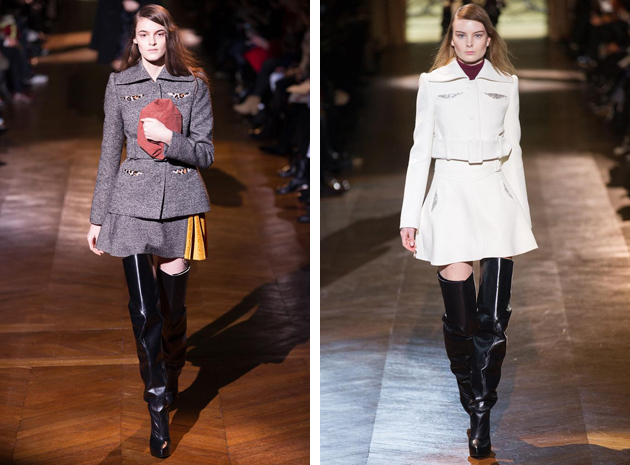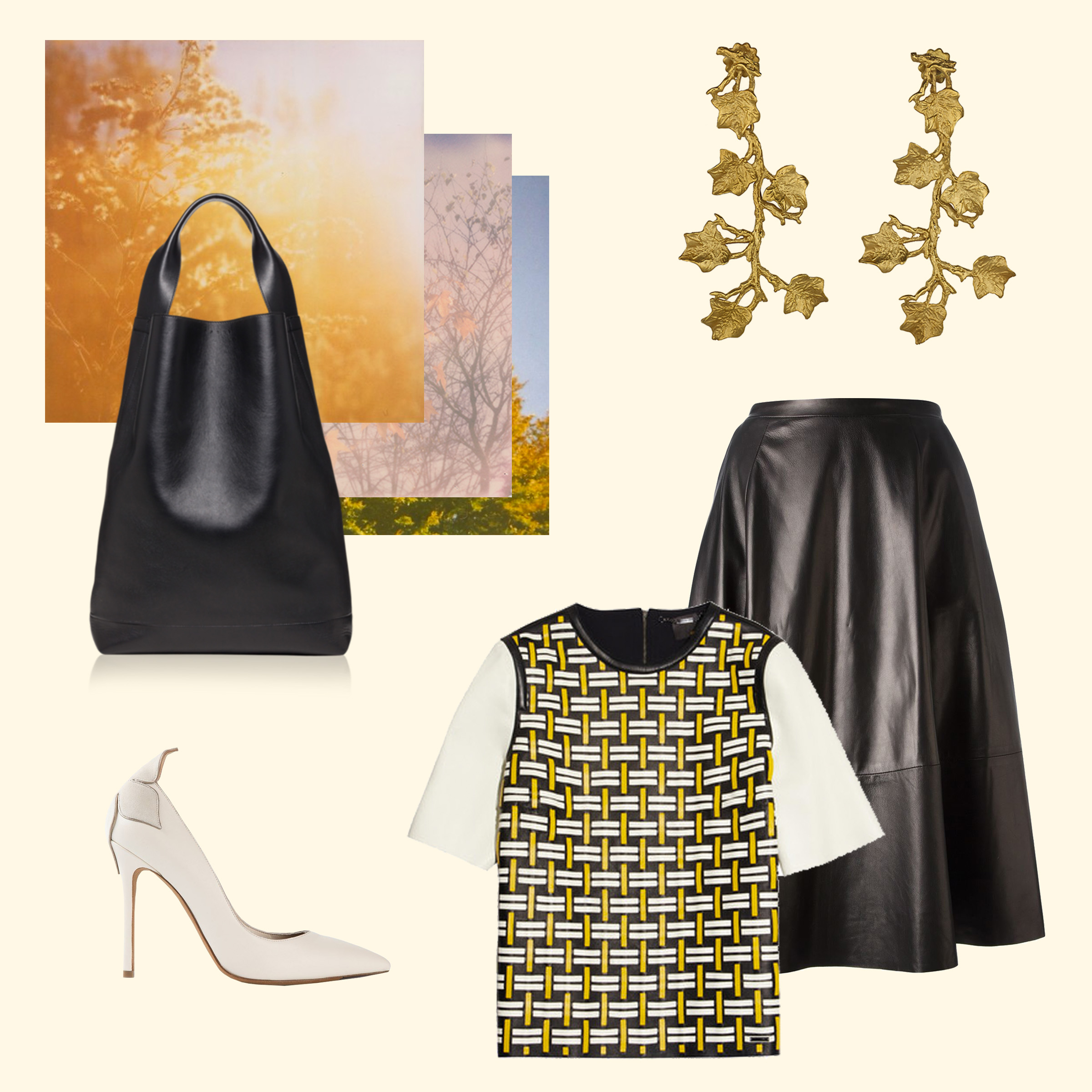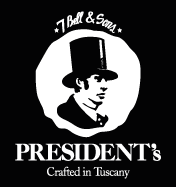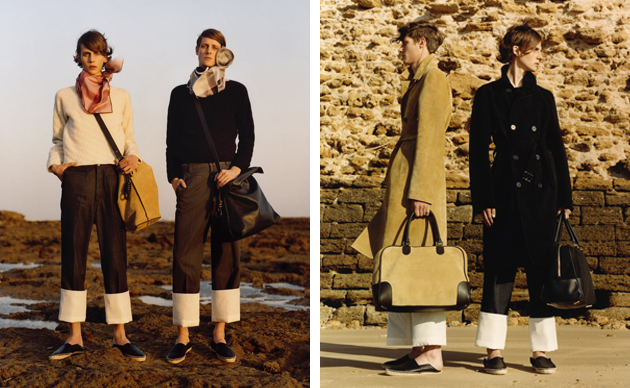
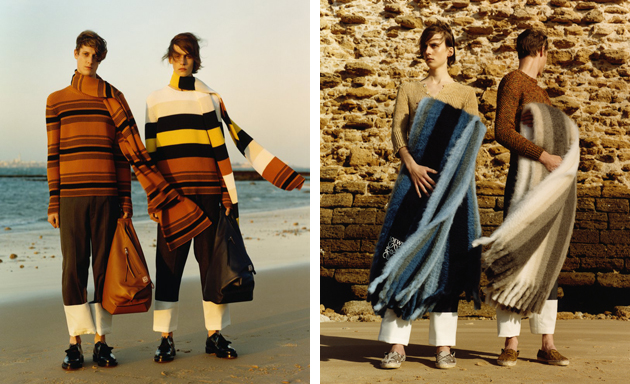
British designer Jonathan Anderson is mostly known for his own successfully brand, J.W. Anderson, but since last fall he can add a position as Creative Director at Loewe to his rich resumé. The choice of appointing Mr. Anderson as Creative Director at the Spanish brand came as a surprise to many and the thought of J.W. Anderson’s modern, provocative and conceptual design at one of the oldest fashion houses under the ownership of LVMH, even raised some eyebrows. The question asked by many as Mr. Anderson took stage in October 2013, was therefore how his innovative, conceptual ideas could be combined with the long legacy of Loewe. Almost a year later, our questions have been answered as Loewe showed its first series of designs under his creative direction.
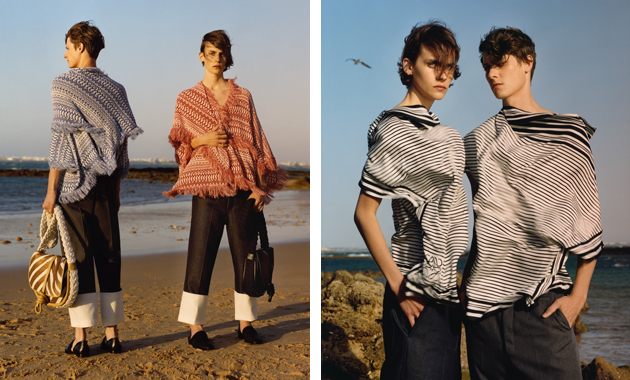
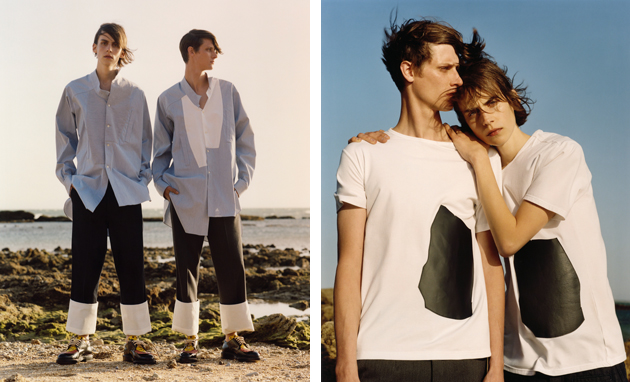
When J.W. Anderson took over Loewe he started to collaborate with the art directors Michaël Amzalag and Mathias Augustyniak of M/M Paris to remake the brand’s logo, as well as to collaborate with Steven Meisel to give the Spring Summer 2015 campaign a new look. The ads are now built on some of Meisel’s archive images from a 1997 editorial in Vogue Italia, together with clean and down scaled pictures of this season’s leather goods. Besides the overall appeal and communication of the brand, J.W. Anderson, clearly proposed a new vision for Loewe’s leather goods and accessories – with a color palette mostly based on black, white, brown, red and dark blue, with interesting patterns and innovative cuts, and off course leather bags and espadrilles (the brand is from Madrid) the menswear Spring 2015 collection is a mix of modern and more classic items – an impeccable reflection of the relationship between Loewe and J.W. Anderson.
